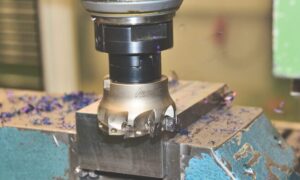In the world of manufacturing and engineering, precision is paramount. One material that has stood the test of time in meeting these stringent requirements is stainless steel. In the realm of CNC machining and prototyping, stainless steel emerges as a formidable player, offering durability, corrosion resistance, and a sleek aesthetic. This article delves into the intricacies of stainless steel CNC machining and prototyping, exploring the artistry behind transforming raw steel into precise, high-quality components.
The Marvel of Stainless Steel:
Stainless steel, renowned for its unique combination of strength, corrosion resistance, and aesthetic appeal, is a staple in various industries. From aerospace to medical devices, stainless steel is favored for its ability to withstand harsh environments and maintain its structural integrity over time. Its non-reactive nature makes it an ideal choice for applications where hygiene and durability are paramount.
CNC Machining: Precision Redefined
Computer Numerical Control (CNC) machining is the backbone of modern manufacturing. When it comes to stainless steel, the CNC process takes on a new level of complexity. Stainless steel’s hardness and strength present challenges that require advanced machining techniques and cutting tools. CNC machines, equipped with state-of-the-art technology, are capable of turning raw stainless steel into intricate and precise components, meeting the most demanding specifications.
The Dance of Tools and Stainless Steel:
Stainless steel CNC machining involves a delicate dance between cutting tools and the material. Carbide tools, known for their hardness and heat resistance, are often employed to shape stainless steel with precision. The machining process involves careful consideration of cutting speeds, feeds, and tool paths to ensure the creation of components that meet exact specifications. This dance requires expertise, experience, and a deep understanding of the material’s behavior under various machining conditions.
Challenges and Solutions:
While stainless steel offers numerous advantages, it presents unique challenges in the CNC machining realm. Its hardness can lead to tool wear, increased cutting forces, and heat generation. Machining stainless steel demands a strategic approach to tool selection, cutting parameters, and lubrication to overcome these challenges and produce components with unparalleled accuracy.
Stainless Steel Prototyping: From Concept to Reality
Prototyping is a critical phase in product development, allowing engineers and designers to test and refine their ideas before full-scale production. Stainless steel prototyping takes this process to a higher level, providing a glimpse into the performance and aesthetics of the final product. CNC machining plays a crucial role in stainless steel prototyping, enabling the creation of prototypes that mirror the exact specifications of the end product.
Conclusion:
Stainless steel CNC machining and prototyping represent a fusion of art and technology. The precision required to shape this formidable material into intricate components demands skill, expertise, and cutting-edge technology. As industries continue to push the boundaries of innovation, stainless steel will undoubtedly remain a steadfast ally, with CNC machining serving as the craftsman’s tool to transform raw steel into works of engineering excellence. The dance between advanced CNC machinery and stainless steel unveils a symphony of challenges and solutions, requiring expertise and a strategic approach. As the fusion of art and technology, stainless steel CNC machining represents a steadfast ally in the relentless pursuit of engineering excellence, ensuring this formidable material continues to shine in the ever-evolving landscape of innovation.



































